Hawkesbury Post contacted all...
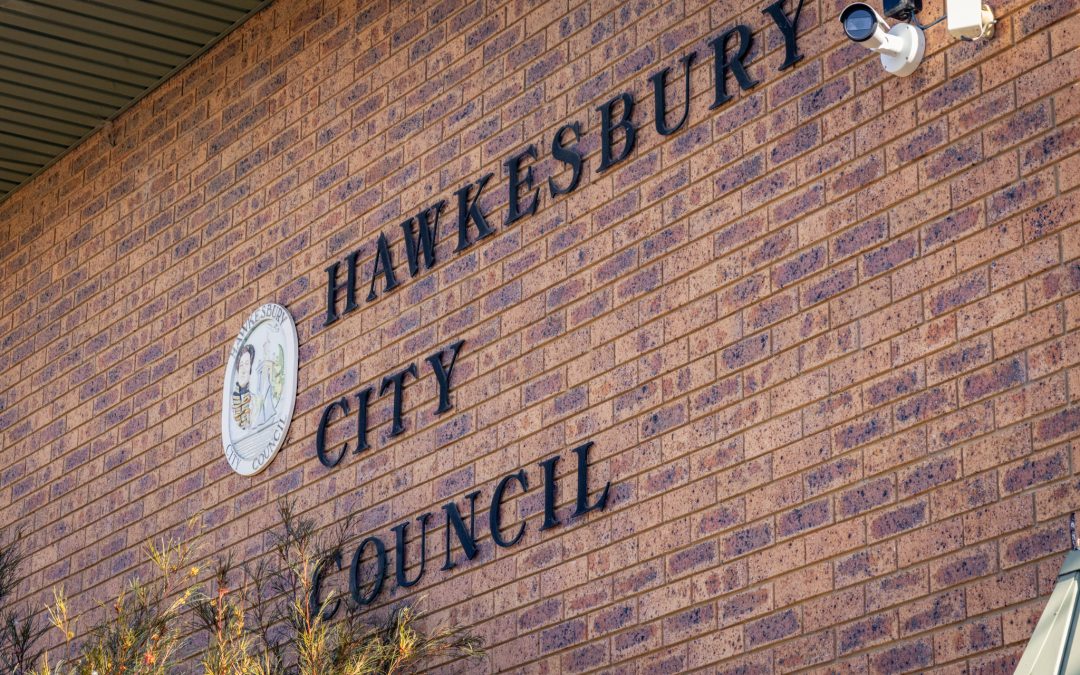

Hawkesbury Post contacted all...
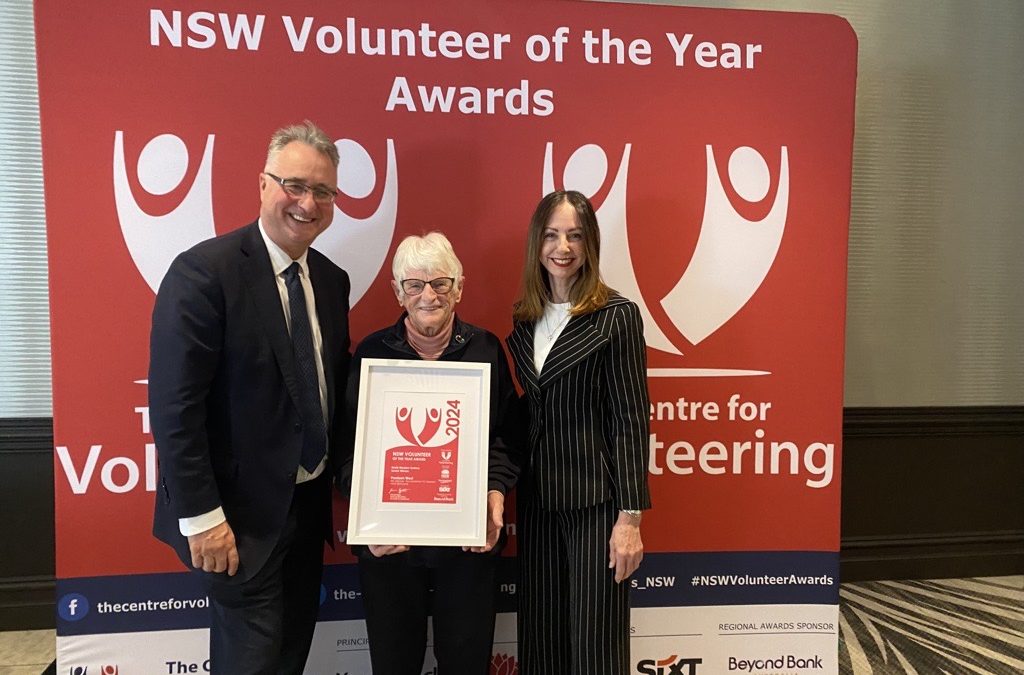
In a heartwarming recognition of community...

After more than two decades of dedicated service, the...
As summer approaches, the specter of an urban heat crisis looms over the Hawkesbury region and its surroundings. In an interview with renowned heat expert Sebastian Pfautsch, we delve into the concerning predictions and potential consequences of what lies ahead, with a fresh, an worrying update from the Bureau of Meteorology.
Associate Professor Sebastian Pfautsch, a leading authority in the field of heat studies, provides a vivid depiction of what we can anticipate this summer. He forewarns that everything seems to point toward heatwaves, but not just your ordinary heatwaves; we’re in for exceptionally intense and prolonged ones. Pfautsch’s warnings are underpinned by the Bureau of Meteorology’s latest forecast, indicating a heightened risk of heatwaves and bushfires for at least the next seven months.
One striking reference to back his concerns is the extreme temperature reached in Castlereagh in 2020, a staggering 52 degrees Celsius. Pfautsch emphasizes that these temperatures are not some distant scenario; they’re real, they’re now, and they’re occurring in areas where we’re continually expanding our population – areas like Marsden Park, Jordan Springs, and Box Hill. “It was six times and at three different locations where I measured at and above 50.0 °C during the 2019/20 summer,” he said.
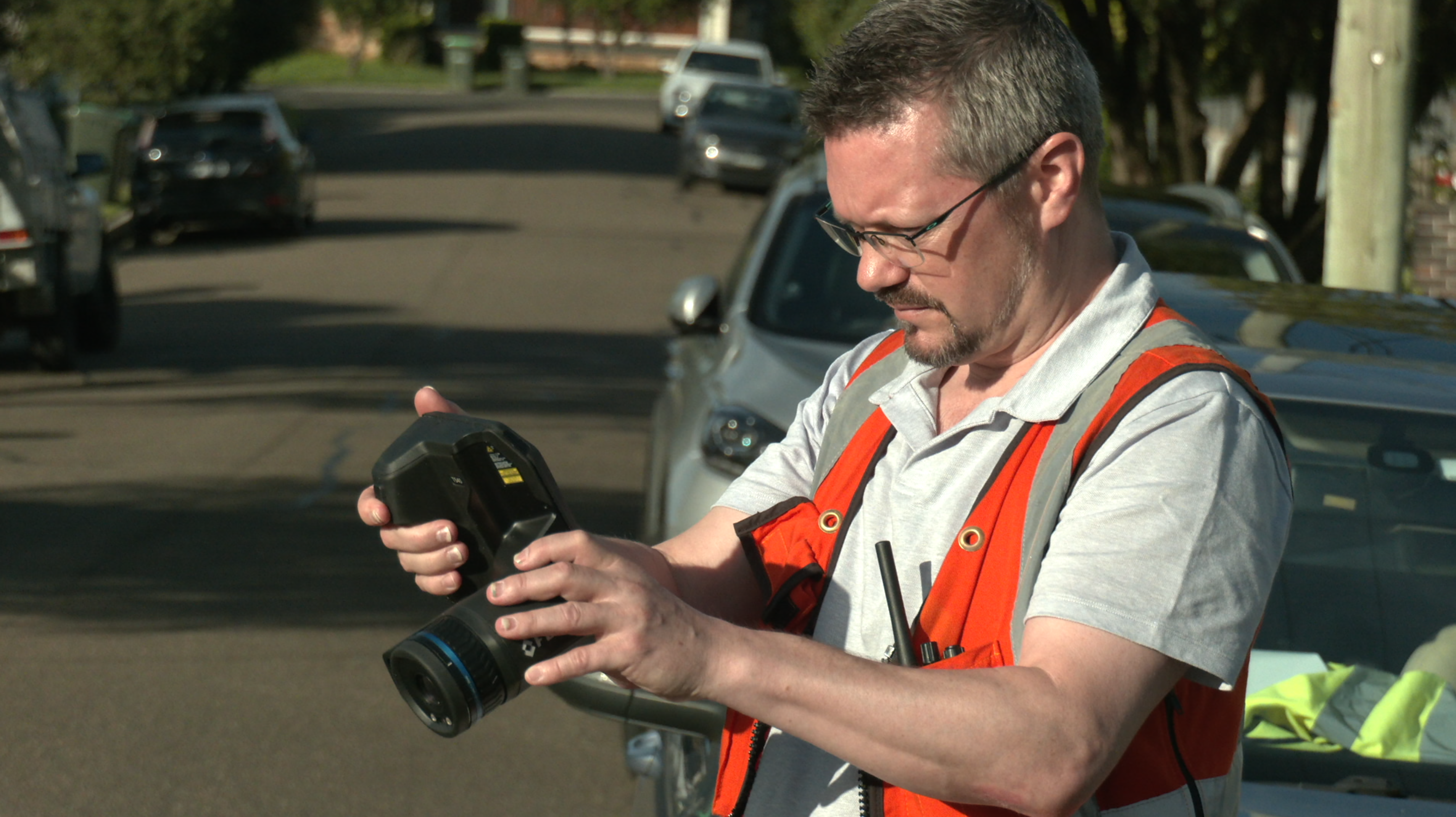
Associate Professor Sebastian Pfautsch measuring temperatures in Western Sydney.
Pfautsch is critical of the government’s failure to address this critical issue, irrespective of the political landscape. He finds it astonishing that even simple solutions like transitioning away from black roofs and planting trees have been hindered due to political pressure. For example Hawkesbury Council has not mandated any tree canopy targets at any of the new urban developments at Glossodia, Pitt Town, Redbank and Vineyard rather they are; “long term goals taking up to ten years.”
Furthermore, Pfautsch says the delayed implementation of building regulation upgrades is worrisome. These upgrades would require buildings to attain a minimum of seven stars in energy and water efficiency, promoting features such as light-colored roofs, better insulation, and double glazing. However, the delay in implementing these changes prioritises short-term cost savings over long-term sustainability and safety for residents.
For the individuals and families residing in Western Sydney, the consequences are nothing short of frightening. This region’s population is particularly vulnerable due to already high rates of chronic diseases and lower disposable income, Pfautsch said. Coupled with a lack of cooling infrastructure, this creates a perilous situation for residents. Pfautsch remarks that building cheaper houses might seem politically advantageous, but the long-term risks are dangerous, especially when we reach temperatures above 50 degrees.
Workplaces also face significant challenges during extreme heat. Tradespeople, road workers, emergency services, and police officers must continue working under these hazardous conditions, often battling not just hot air but also radiant heat. Pfautsch points out that millions of work hours are predicted to be lost due to extreme heat, which will have a substantial impact on various industries and sectors.
“People can’t work under these conditions. It’s just too dangerous. We are knowingly steering ourselves into catastrophe, because there will be large, negative impacts on the population of Western Sydney. It’s a bad mix. For the individual it’s dangerous , simply dangerous,” he said.
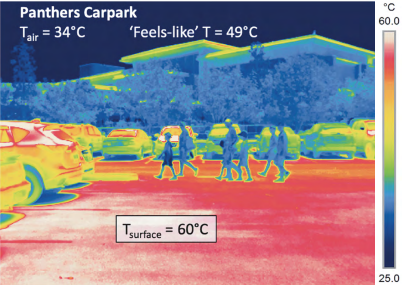
A 2020 heat study for Penrith Council undertaken by Associate Professor Sebastian Psautsch recorded extreme temperatures across the LGA. Image © Sebastian Pfautsch.
A recent study in the US estimated that high heat costs the country $100 billion annually in reduced productivity, a figure forecasted to double by 2030.
Last month the Australian government released the Intergenerational Report which maps the country’s future for the next 40 years. It showed just how much Australia has to lose. It found that a two degree increase in global temperatures is expected to cause disruption to productivity, and the agricultural and tourism sectors particularly. Yet the federal government’s current target of 43 percent emissions reduction on 2005 levels by 2030 is not sufficient to limit warming to 1.5 degrees.
“The Treasury estimates we are facing lost economic output to the tune of hundreds of billions of dollars. These estimates don’t even include health and mortality yet, which we know are among the biggest of climate-related costs. Our choice is clear: take urgent climate action or endure substantial economic consequences,” Climate Councillor and economist Nicki Hutley said.
In a concerning revelation, Pfautsch notes that the air conditioning systems many rely upon to beat the heat are ill-equipped to handle extreme temperatures, with their efficiency limited to just 48.6 degrees Celsius. When placed in poorly ventilated spaces between buildings, these systems become inefficient, contributing to the overall problem.
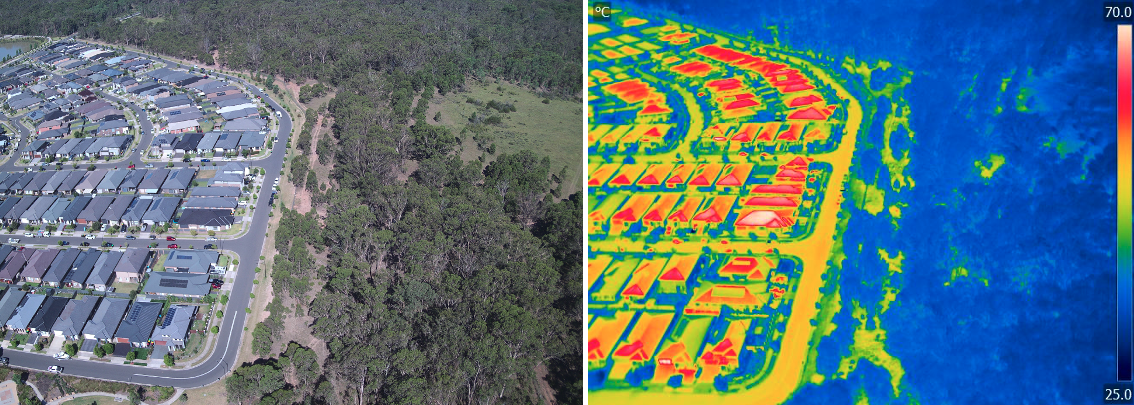
Conversion of vegetated space to a new suburb introduces heat from roofs and roads. Both absorb solar radiation, store it and reradiate is as sensible heat. This leads to warming of the air, which in turn leads to hotter ambient air temperatures. Image © Sebastian Pfautsch.
Regarding statistics on heat-related deaths, Pfautsch acknowledges the complexity of obtaining accurate figures. Many heat-related incidents are not immediately recognised as such in hospitals, making it difficult to pinpoint the exact number of casualties. However, studies estimate an average of 116 heat-related deaths per year in Sydney, with potentially higher numbers during severe heatwaves, like the ones we will experience this summer.
Pfautsch expects temperatures to soar above 50 degrees Celsius, potentially surpassing the record set in 2020. These extreme temperatures often occur during heatwaves or at the end of a prolonged period of intense heat, offering little respite for residents.
The concept of heat centres as potential refuges from extreme temperatures may seem practical; however, it presents its own set of challenges. Issues related to religious and gambling exposure raise concerns about the suitability of churches and RSL clubs, while shopping centres pose their own problems for parents with limited disposable income and children. For the most vulnerable individuals without transportation, reaching these shelters can be a daunting task, especially when they are walking in sweltering conditions.
While initiatives like the Greater Sydney Heat Task Force show promise, Pfautsch acknowledges that it may be overdue. However, it’s never too late to take action. The key lies in recognising the complexity of the issue and the urgent need for effective urban planning, improved building standards, and increased green spaces.
Pfautsch comments coincide with the release of the Bureau of Meteorology’s long-range forecast to help the community prepare for Australia’s peak season for severe weather.
Senior Meteorologist Sarah Scully said overall Australians can prepare for dry and warm conditions with an increased risk of heatwaves and bushfire weather this spring and summer.
“Daytime and night-time temperatures have an increased chance of being unusually warm for October to February. Warm nights after hot days means little relief from heat and can lead to heat stress,” Ms Scully said.
Pfautsch said that while the best time to act was twenty years ago, the next best time is today, if we are to have any chance to manage the looming heat crisis.